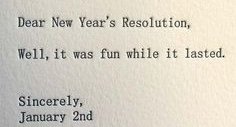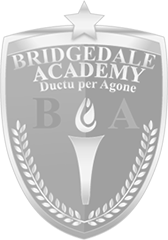How Tips from a Major League Pitching Coach Help You Set Goals
The following is an excerpt from ‘Chapter 7: Reframing from Failure to a Learning Moment’ within Crunch Time: How to Be Your Best When It Matters Most, being released on January 23, 2017.
So How are those New Year's Resolutions Going?

You’ve likely read the dismal statistics when it comes to keeping New Year’s resolutions (surveys show only 8% of people keep their resolutions). While there may be some initial excitement or motivation by creating a lofty goal for the year, this excitement is often quickly replaced by anxiety.
A Better Approach to Goal-Setting
Let me share with you a different and better approach I learned from Rick Peterson, former Major League Baseball pitching coach with the New York Mets, Milwaukee Brewers as well as the Oakland A’s of Moneyball fame.
At the beginning of spring training every year, Rick asks his pitchers, “What’s your goal?” Most of the answers given center around outcomes like winning a certain number of games, or pitching a certain number of innings. Rick takes these answers as an opportunity to teach his pitchers a lesson in goal setting. While many of us have been taught to set lofty, long-term-outcome goals, the type that show up on the back of a baseball card or a company financial statement, these goals are overrated in comparison to lesser-appreciated, short-term, bite-sized process goals.
What’s wrong with focusing on lofty outcome goals?
It can lead to unhealthy distractions, such as focusing on factors outside your control. For example, winning a baseball game has many factors outside the pitcher’s control—how many runs his team scores, how well his team fields, how well the opposing hitters handle good pitches, and even the calls of the umpire.
In addition, the magnitude of a lofty outcome goal that was initially inspiring and motivating can become intimidating and demoralizing, causing doubt and anxiety that hurts performance.
Rick refocuses his pitchers on simple, short-term, bite-sized process goals. He tells them they are professional glove hitters. Their goal is, quite simply, to hit the catcher’s glove as often as possible with the right pitch.
“Hit the glove!” is the mantra Rick uses to reduce the pressure of lofty outcome goals and keep them focused on what they can control. By focusing on this simple process goal, they are able to avoid being distracted by things outside their control.
In addition to increasing focus, hitting the glove on a high percentage of pitches is also the most probable path to achieving larger, outcome-oriented individual and team goals.
So how does “hit the glove!” translate beyond professional baseball?
I’ve worked in sales for many years. The beginning of each year is one of the moments when salespeople’s anxiety levels are at their highest. The number you produced last year is a thing of the past. The scoreboard is turned back to zero. Your new and enlarged multimillion-dollar quota is staring you right in the face. You have to prove yourself all over again, and again, and again.
 In many sales organizations, it’s viewed as motivational to talk about hitting big numbers—to talk about how much more you’re going to deliver this year compared to last. Despite positive intentions, the rally cry of “We’re raising the bar!” leads some to shed tears. While this is intended to be motivational, the result is often fear, worry, and doubt.
In many sales organizations, it’s viewed as motivational to talk about hitting big numbers—to talk about how much more you’re going to deliver this year compared to last. Despite positive intentions, the rally cry of “We’re raising the bar!” leads some to shed tears. While this is intended to be motivational, the result is often fear, worry, and doubt.
Why? Because, just like pitchers, as salespeople, we know there are many parts of the sales game that are beyond our control. Also, it’s easy to lose focus amidst the cornucopia of daily distractions.
Hitting the Glove when Dealing with Customers and Prospects
After I heard Rick talk about “Hit the glove!” I immediately began to think of what my day-to-day sales version of hitting the glove was. I settled on high-quality interactions with customers and prospects. I defined a high-quality interaction as any interaction with the customer or prospective customer that advances a sale and/or our relationship. If I simply focused on having high-quality interactions with customers on a daily basis, I would make great progress toward putting a dent in my quota.
 Once I defined my version of hitting the glove, I began to think about how many high-quality interactions I should have each day. I set the initial target at two. Before you laugh and ask what I was going to do after lunch, consider the math. If I had two high-quality interactions per day, that was 10 per week. That was 40 per month. Assuming one month of vacation, that was 440 per year. That was many more than I had been averaging.
Once I defined my version of hitting the glove, I began to think about how many high-quality interactions I should have each day. I set the initial target at two. Before you laugh and ask what I was going to do after lunch, consider the math. If I had two high-quality interactions per day, that was 10 per week. That was 40 per month. Assuming one month of vacation, that was 440 per year. That was many more than I had been averaging.
As soon as I started focusing on my new simple, short-term, bite-sized process goal of two high-quality interactions with customers each day, I began thinking about my day differently. I began prioritizing the two high-quality interactions with customers above everything else. As I considered how to invest my time, I regularly asked myself, “Is this helping me hit the glove?”
As a result, my focus improved remarkably. I wasted less time. I didn’t give my quota a second thought. My numbers took off, and I finished the year more than 25 percent ahead of my prior year’s performance. Small changes, big results.
What’s your version of hitting the glove?
Some of the content above is an excerpt from my new book with Rick Peterson, Crunch Time: How to Be Your Best When It Matters Most. The book is being released on January 23, 2017 and is available for pre-order now on your favorite online bookstores.
Suggested next steps:
- Identify and act upon your version of hitting the glove
- Please add your comments, ask questions, or share with your network
- Go to juddhoekstra.com to download a free excerpt
- Pre-order your copy
 Judd Hoekstra appears by permission. He is coauthor of the bestselling "Leading at a Higher Level" and "Who Killed Change?" as well as Vice President, The Ken Blanchard Companies.
Judd Hoekstra appears by permission. He is coauthor of the bestselling "Leading at a Higher Level" and "Who Killed Change?" as well as Vice President, The Ken Blanchard Companies.
He is an expert in making concepts universal and accessible. Performing under pressure is one such concept, which he ties masterfully to athletic performance in his most recent book, "Crunch Time: How to be Your Best when it Matters Most."
Judd is also a Bridgedale dad, as his son Cole is an 8th grader at Bridgedale Academy.
If you would like to learn more about thriving under pressure, stay tuned for future posts and check out: www.juddhoekstra.com
"Bridgedale Academy is honored to have Judd Hoekstra as a contributing writer on our blog page. At Bridgedale we are committed to the development of our young student-athletes, helping them to develop their physical and mental skills so they can perform at their best when it matters most, no matter the arena of life that challenges them. If you would like to learn more about Bridgedale Academy, please click the button below so we can schedule a time to chat."
Mike McPartlin, Headmaster, Bridgedale Academy



